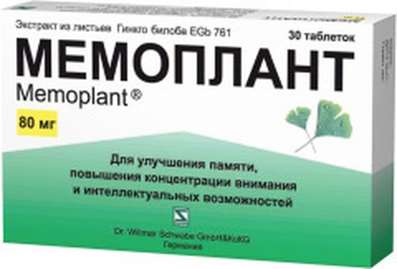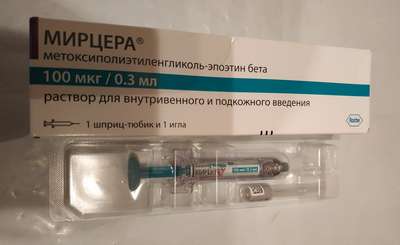Instruction for use: Nilogrin
I want this, give me price
Trade name of the drug – Nilogrin
Active substance: Nicergolinum
Dosage Form: Tablets
Composition (per tablet): 1 coated tablet contains nicergoline 10 or 30 mg; in blister 30 pcs., in box 1 blister or in dark glass bottles to 30 pcs., in box 1 bottle.
Pharmacotherapeutic group:
Alpha-blockers
Corrector disturbance of cerebral circulation
ATXC04AE02 Nicergoline
The nosological classification (ICD-10)
G43 Migraine: The pain at migraine, hemiplegic migraine, migraine headache, migraine attack, continuous headache, hemicrania
I63 Cerebral infarction: ischemic Stroke; Ischemic brain disease; Ischemic stroke; Ischemic stroke and its consequences; Ischemic cerebral stroke; Ischemic cerebrovascular accident; Ischemic brain damage; Ischemic brain damage; ischemic conditions; Cerebral ischemia; Acute hypoxia brain; Acute cerebral ischemia; Acute ischemic cerebrovascular accident; Acute cerebral infarction; Acute ischemic stroke; Acute period of ischemic stroke; Focal cerebral ischemia; Ischemic stroke; recurrent stroke; The syndrome of Morgagni-Adams-Stokes; Chronic cerebral ischemia; cerebrovascular stroke; embolic stroke; Ischemic brain damage
I73.0 Raynaud's Syndrome: Raynaud's syndrome Leriche; Raynaud's disease; Raynaud's phenomenon; RaynaudLeriche syndrome; Raynaud's disease; Raynaud's syndrome with trophic disorders; Peripheral angiopathy
I73.9 Peripheral vascular disease, unspecified: angiospasm; Vasospasm / vasoconstriction; vasospastic disorders; Violation of venous microcirculation; Violation of circulation; Violation of peripheral blood circulation; Lack of peripheral blood circulation in the lower and upper limbs; Peripheral arterial occlusive disease; Peripheral arterial occlusive disease in stages III-IV on Fontaine; Peripheral vascular insufficiency; Peripheral vascular lesions; Peripheral vascular disorders; Peripheral circulatory disorder; spasm of artery; angiospasm; Functional peripheral arterial disease; Chronic occlusive disease; Chronic obliterating diseases of the lower limbs; Chronic arterial occlusive disease
P91.0 cerebral ischemia
S06 Intracranial injury: brain injury; brain injury; traumatic brain injury; The traumas of head injury; The consequence of traumatic brain injury; The consequence of TBI; Condition after traumatic brain injury; concussion; Craniocerebral trauma; Traumatic encephalasthenia ; Brain Injury; skull Injuries; Brain Contusion; Cranial trauma; Traumatic brain injury with a predominantly stem lesion level
Pharmacological Properties of Nilogrin
Pharmachologic effect - Mode of action - vasodilator, improves cerebral blood flow.
Blocks alpha-adrenergic receptors, it stimulates dopamine and serotonergic structures. It dilates blood vessels, improves the metabolism of brain cells during hypoxia and ischemia, inhibits platelet aggregation.
Pharmacokinetics
Once inside absorbed quickly and almost completely. Serum Cmax achieved after 1-1.5 hrs T1 / 2 -.. Metabolized 2.5 h (90%) in the reactions of hydrolysis, demethylation and glucuronidation. Write mainly kidneys (70-80%), partly excreted in the feces (20%).
Indications for Nilogrin
Acute and chronic cerebrovascular insufficiency (including dementia, brain ischemia attacks, thrombosis and embolism of cerebral vessels, skull trauma, vascular changes in the net and the choroid, ischemic disorders of hearing and balance), insufficiency of peripheral blood circulation in the lower and upper limbs, migraine.
Contraindications for Nilogrin
Hypersensitivity, acute bleeding, recent myocardial infarction, hypotension, bradycardia, concomitant use of alpha and beta-blockers, pregnancy, breast-feeding.
Pregnancy and breast-feeding
Contraindicated. At the time of treatment should stop breastfeeding.
Nilogrin Dosage and Administration
Inside, before the food, if there are abdominal pain, can be taken with food. Initial dose - 5.10 mg 3 times a day. The course of treatment - 2-3 months or more.Patients with renal insufficiency and elderly people with serum creatinine levels above 2 mg% daily dose - 10-15 mg.With long-term treatment of patients should be evaluated at least once every six months with a view to a possible dose reduction or discontinuation.
Side effect of Nilogrin
From the nervous system and sensory organs: dizziness, anxiety, agitation, drowsiness or insomnia, fainting.
From the digestive tract: decreased appetite, nausea, diarrhea, gastric hyperacidity, stomach pain.
Cardio-vascular system and blood (blood, hemostasis): orthostatic hypotension, a decrease clotting and blood viscosity.
Allergic reactions: erythema, urticaria.
Other: increased sweating, redness of the skin.
Interaction
It enhances the effect of antihypertensive drugs, anticoagulants, antiplatelet drugs and alcohol.
SPECIAL INSTRUCTIONS for Nilogrin
Be wary of during the drivers of vehicles and people skills relate to the high concentration of attention.
Storage conditions of Nilogrin
In a dry, dark place.
Keep out of the reach of children.
Shelf life
3 years.
Do not use beyond the expiration date printed on the package.

 Cart
Cart





